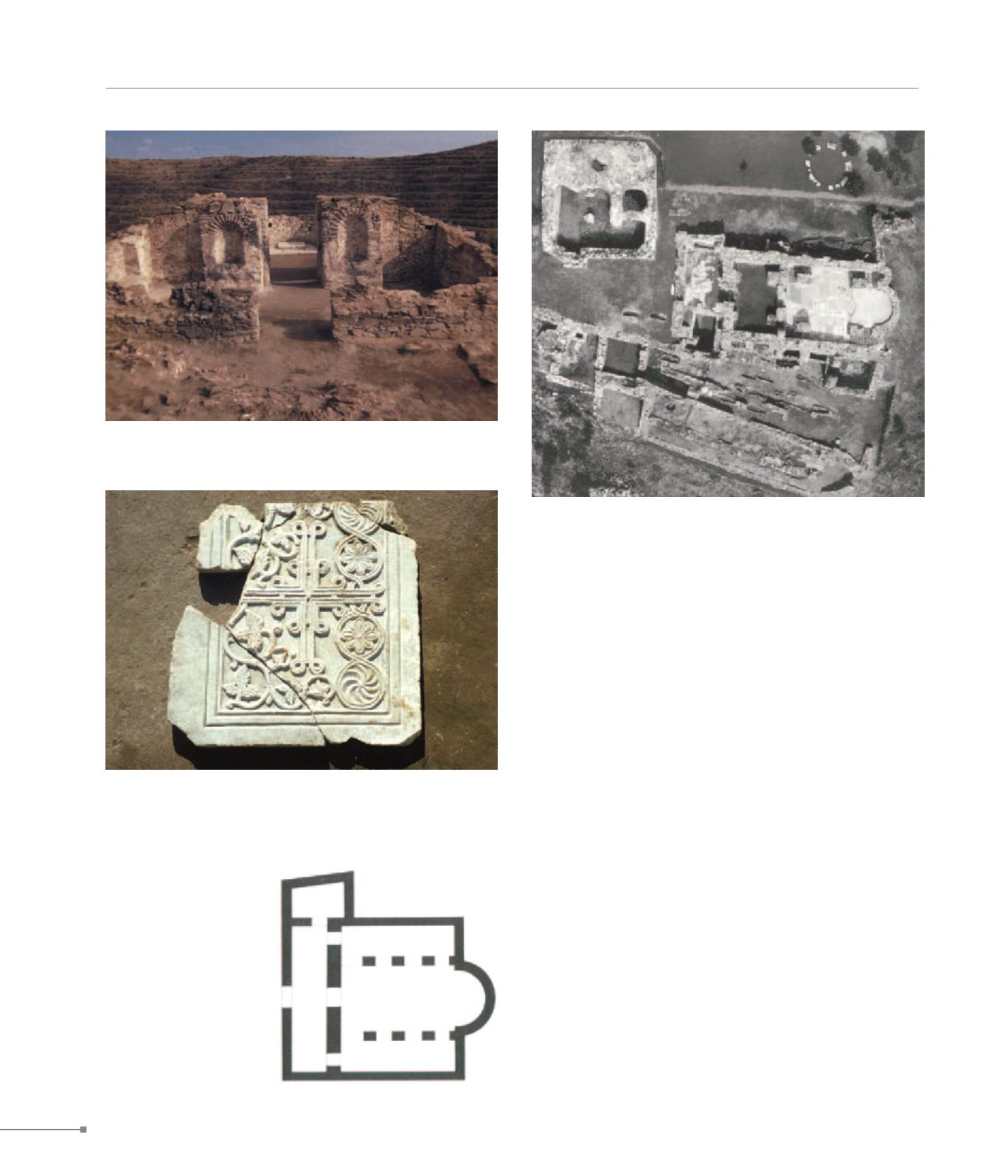
Polyanthos.
Anastasioupolis – Peritheorion.
THRACE
90
19. Mount Papikion, Kerasia, church B, closure slab (Παπίκιον όρος,
Κερασιά, ναός Β’, θωράκιο)
19. Mount Papikion, Kerasia, church B, closure slab (Παπίκιον όρος,
Κερασιά, ναός Β’)
19. Mount Papikion, Lenos complex (Παπίκιον όρος, συγκρότημα
Ληνού)
20.
Polyanthos
.
Excavations at Polyanthos off the old provincial road from Ias-
mos to Komotini have revealed a three-aisled, timber-roofed ba-
silica with narthex dating from the Mid-Byzantine period; tombs
were located inside the church. On the small hill above the ba-
silica the remains of a Byzantine fortress are preserved, and on
the plain by the contemporary village, a Byzantine cemetery
has been partly investigated. On the river bed, a bit further to
the S of the railway line, remains of the piers of a Roman or
Early Christian bridge can barely be discerned.
21.
Anastasioupolis
–
Peritheorion
.
To the SE of the village Amaxades, at the far end of Lake Vis-
tonis, S of the both ancient and contemporary Via Egnatia, lies
Anastasioupolis, a city of the time of Anastasius I (r. 491-518).
It was an episcopal see in the Early Christian and Byzantine
periods and in the 14th c. it was raised to a metropolis. Accord-
ing to Procopius, Justinian I (r. 527-565) constructed a diateich-
isma to secure the coast and islets from barbarian raids. In the
Byzantine period the city was renamed as Peritheorion and in
1206 it was destroyed by Tsar John of Bulgaria (r. 1197-1207).
Andronicus III Palaeologus (r. 1328-1341) carried out extensive
repairs on the fortifications. Circa 1373 the city was relatively au-
tonomous from Constantinople, though by 1383 at the latest it
had been subjugated by the Turks until it came under their dom-
ination in the following year. Anastasioupolis is of an irregular
20. Polyanthos, basilica,
ground plan (Πολύανθος,
βασιλική, κάτοψη)


